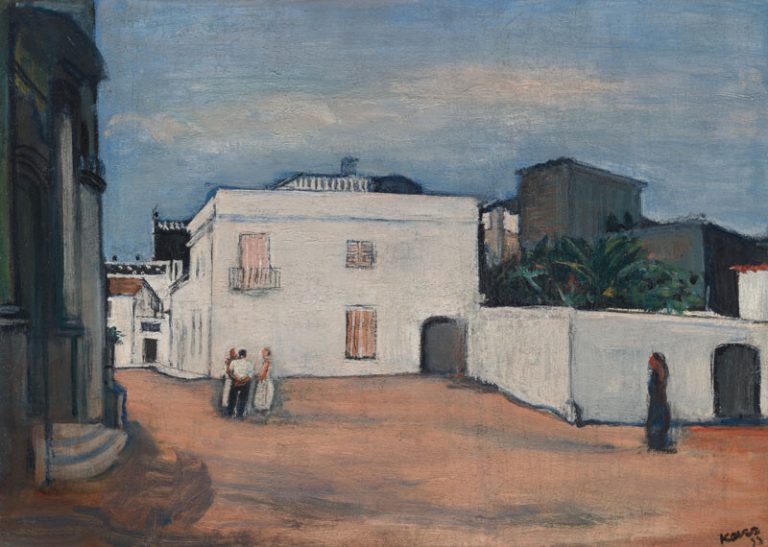The National Gallery Prague has launched an exhibition spotlighting a rarely explored chapter of Czech art with “École de Paris: Artists from Bohemia and Interwar Paris”. Running from 8 November 2024 to 2 March 2025 at the Wallenstein Riding School, the exhibition features Czech artists who gained prominence in interwar Paris but remain lesser-known in their homeland.
Visitors will have the opportunity to see works by Georges Kars, Othon Coubine, and François Zdeněk Eberl, Czech artists celebrated in Paris during the 1920s and 1930s. These works are being displayed in Prague for the first time, revealing the unique contributions of Czech painters to the broader Parisian art scene. The exhibition offers insights into a diverse array of pieces that once captivated Parisian audiences and will shed light on artists who, despite their success abroad, did not gain comparable recognition in their native country.
Curated by Anna Pravdová, the exhibition highlights how Kars, Coubine, and Eberl became prominent figures within the Parisian art world, finding favour with collectors and exhibiting in prestigious galleries. Pravdová notes that while artists like František Kupka, Josef Šíma, Jindřich Štyrský, and Toyen are typically associated with Czech art in France today, it was actually Kars, Coubine, and Eberl who had widespread appeal among Parisians of the interwar period. “The Parisian public had different favourites,” Pravdová said. “They were exhibited in the most prestigious galleries. We will present their work in the broader context of the Paris school.”
The exhibition also includes works by notable contemporaries, such as Amedeo Modigliani, Marc Chagall, Suzanne Valadon, Chaïm Soutine, Jules Pascin, Chana Orloff, and Maurice Utrillo, providing a richer context for the cosmopolitan environment of Paris at the time. These artists together represented a variety of styles that flourished within the diverse and experimental atmosphere of interwar Paris.
The era between the two world wars positioned Paris as a hub for artistic exchange and innovation, where individuals from various backgrounds could collaborate freely and develop new styles. Visitors to the exhibition are invited to explore the galleries, salons, and streets of Montmartre, where the art world intertwined with the lives of marginalised people and vibrant characters from all walks of life. Paintings on display include scenes from Parisian cabarets, portraits of artists, still lifes, and landscapes from the south of France, each reflecting the spirit of interwar Paris.
Alicja Knast, General Director of the National Gallery Prague, expressed her enthusiasm for the exhibit, saying, “Everyone is warmly invited to immerse themselves in interwar Paris with us and enjoy the art of Kars, Coubine and Eberl, Czech painters who succeeded in establishing themselves there. I view the Paris school above all as a strong symbol of how diversity and freedom can support exceptional creativity.”
Among the notable highlights are works by Othon Coubine, which recently resurfaced from American collections, including pieces previously owned by collector Leo Stein, brother of famed writer Gertrude Stein. This exhibition presents a rare opportunity to see these artworks in Europe, tracing the journey of Czech artists in Paris and illustrating the creative freedom that flourished in the city between the wars. https://www.ngprague.cz/en


